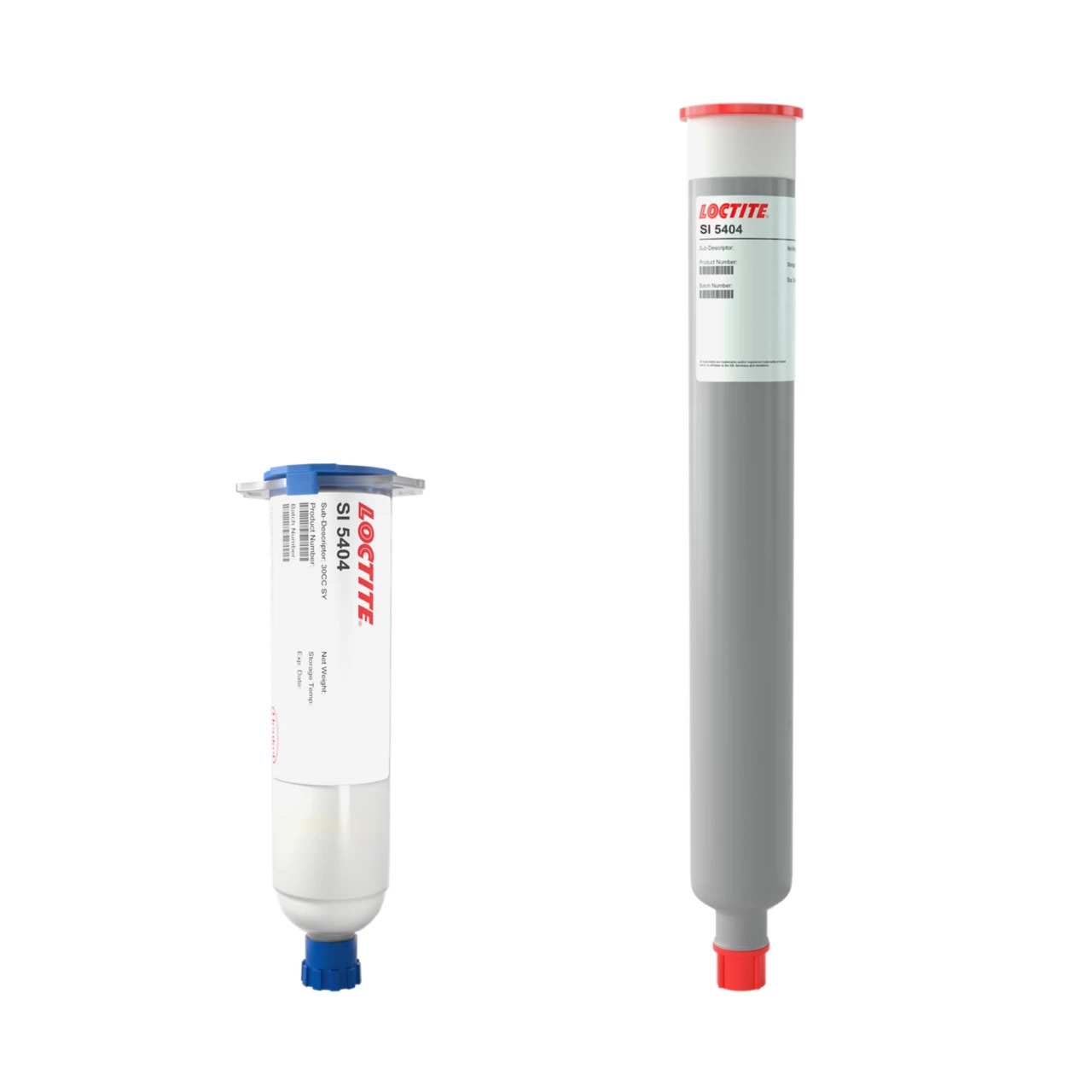LOCTITE SI 5404
- Electrical isolation
- Thermally conductive
- Bond metallic heat sinks
Product Description
LOCTITE SI 5404 is designed to bond metallic heat sinks, ceramic chips and circuit board substrates. LOCTITE SI 5404 applications include the bonding of various heat generating devices (power devices) to their respective heat sinks.
LOCTITE SI 5404 is designed to provide a strong bond between the device and its heat sink as well as low resistance to the flow of heat from the electronic device to the heat sink. A typical application would be the bonding of any power semiconductor, module, graphics processor or other heat generating device to a heat sink or metal enclosure in an electronics circuit.
LOCTITE SI 5404 is a "heavy paste" type of substance and that’s why extrusion rate is mentioned on TDS, instead of viscosity. This is a measurement of a certain amount per minute which will be squeezed out of the cartridge after applying pressure. If you need TC higher than 1 W/mK you might be interested in SI5406M RTV silicone with 1.5 W/mK.
Cure Schedule
- 10 minutes for 150°C
- 15 minutes for 130°C
IR or Convection oven
Technical Specifications
| General Properties | |||||
| Specific Gravity Specific Gravity Specific gravity (SG) is the ratio of the density of a substance to the density of a reference substance; equivalently, it is the ratio of the mass of a substance to the mass of a reference substance for the same given volume. For liquids, the reference substance is almost always water (1), while for gases, it is air (1.18) at room temperature. Specific gravity is unitless. | 2.3 | ||||
| Thermal Properties | |||||
| Glass Transition Temperature (Tg) Glass Transition Temperature (Tg) The glass transition temperature for organic adhesives is a temperature region where the polymers change from glassy and brittle to soft and rubbery. Increasing the temperature further continues the softening process as the viscosity drops too. Temperatures between the glass transition temperature and below the decomposition point of the adhesive are the best region for bonding. The glass-transition temperature Tg of a material characterizes the range of temperatures over which this glass transition occurs. | -40 °C | ||||
| Thermal Conductivity Thermal Conductivity Thermal conductivity describes the ability of a material to conduct heat. It is required by power packages in order to dissipate heat and maintain stable electrical performance. Thermal conductivity units are [W/(m K)] in the SI system and [Btu/(hr ft °F)] in the Imperial system. | 0.95 W/m.K | ||||
| |||||
| Electrical Properties | |||||
| Volume Resistivity Volume Resistivity Volume resistivity, also called volume resistance, bulk resistance or bulk resistivity is a thickness dependent measurement of the resistivity of a material perpendicular to the plane of the surface. | 2.9x1014 Ohms⋅cm | ||||
| Mechanical Properties | |||||
| Elongation Elongation Elongation is the process of lengthening something. It is a percentage that measures the initial, unstressed, length compared to the length of the material right before it breaks. It is commonly referred to as Ultimate Elongation or Tensile Elongation at break. | 65 % | ||||
| |||||
| |||||
Additional Information
We are dealing with multiple materials in our lab. How should we approach Silicones? Any standards or methods?
We are not aware of any standards that deal with the compatibility of silicones and other adhesives. It is clear that silicones are bad for adhesion for non-silicone materials so you should try to avoid cross-contamination. We would keep these separate or apply silicone as the last step, if possible.
Regarding Pot life, this heat-curing silicone material is stable for days at temperatures below 30°C. We do not have specific test data on this.



